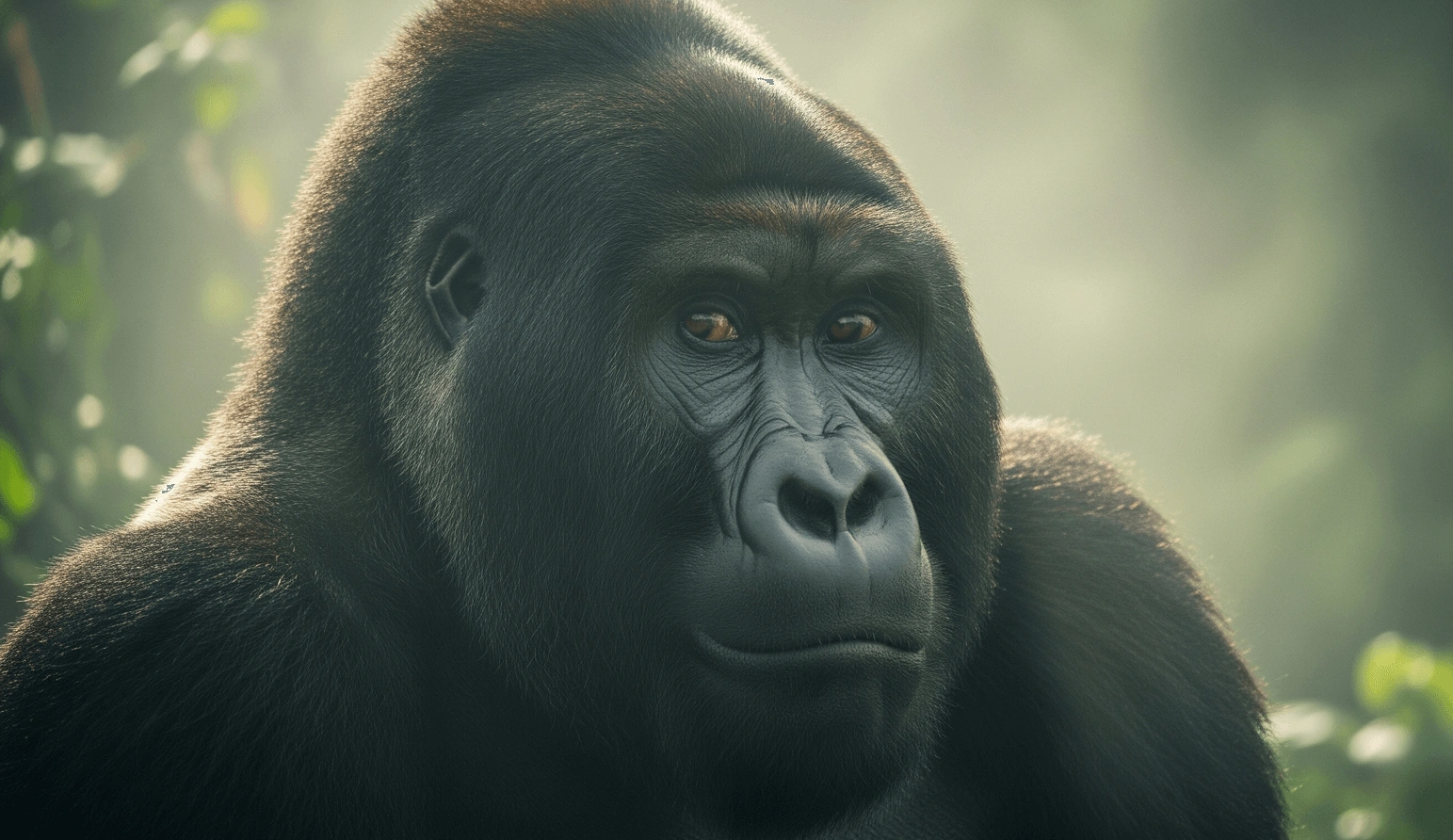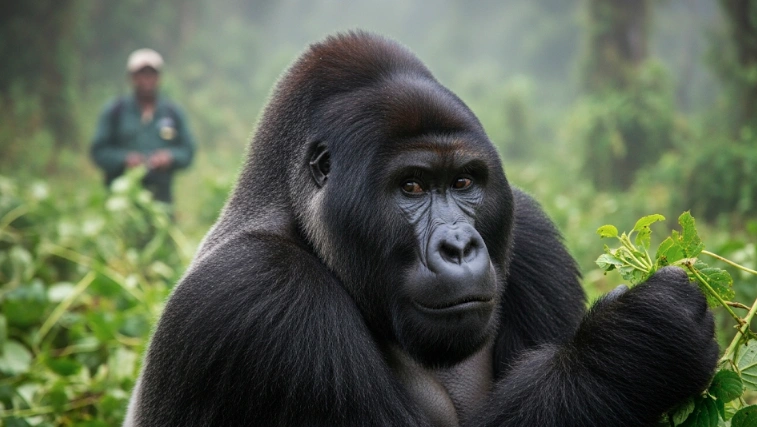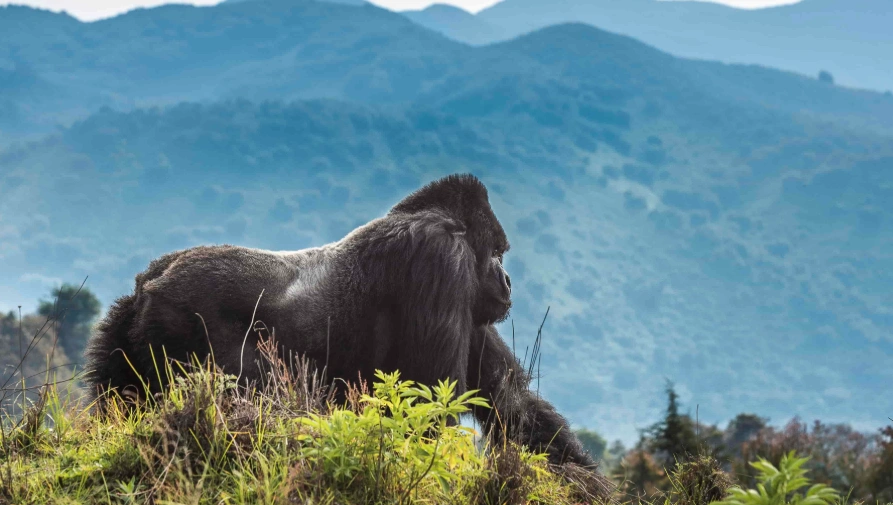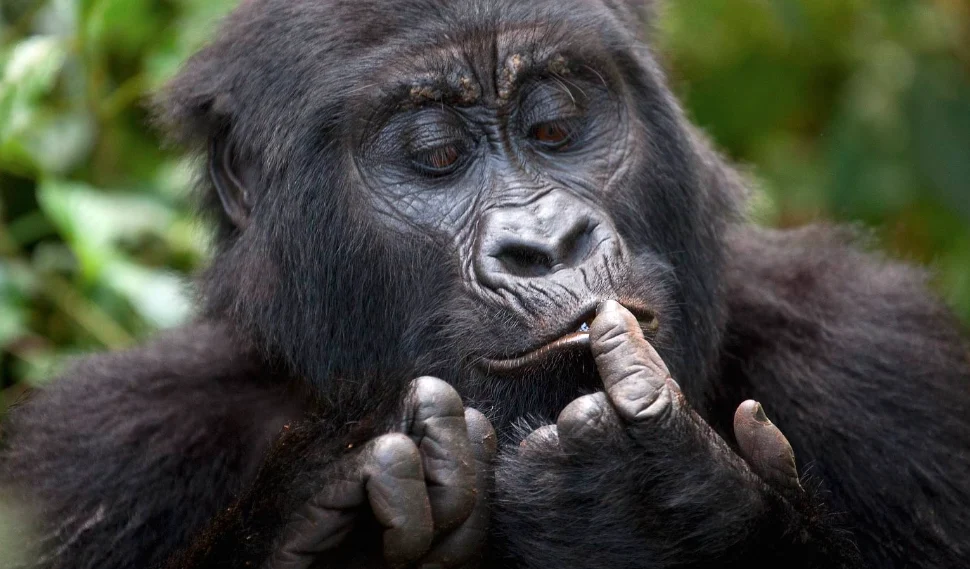Gorillas rise with the sun.
Their day begins when the forest is still damp, the air heavy with the scent of earth and rain. And if you’ve ever wondered when gorillas are most active—it’s in those early, golden hours.
When I first stepped into the dense embrace of Uganda’s Bwindi Impenetrable Forest, I remember feeling the pulse of the morning—the soft crack of twigs, distant grunts, and the slow rhythm of a family on the move. That’s when the magic happens.
Let’s dive into the natural rhythm of these extraordinary creatures.
Key Takeaways
- Gorillas are most active in the early morning (around 6 am to 10 am) and late afternoon.
- The middle of the day is typically reserved for resting and napping.
- Most gorilla trekking permits are timed perfectly to match their peak activity.
- Feeding, playing, and social bonding are best observed in the morning hours.
- The calm midday hours still offer beautiful moments but with less movement.
When Are Gorillas Most Active?
Morning Hours (6:00 am – 10:00 am)
This is prime time. Gorillas wake up early and immediately begin feeding—munching through leaves, stems, fruit, and bark. They can travel significant distances during these hours in search of the freshest food.
You’ll often see:
- Adults foraging aggressively
- Juveniles playing, tumbling, and chest-beating
- Silverbacks leading the group with watchful authority
Morning treks in Bwindi or Mgahinga almost always bring you face-to-face with this energetic window.
Here’s a tip: our post on what to pack for gorilla trekking can help you prep for these early starts!
Midday Hours (11:00 am – 2:00 pm)
After a busy morning, gorillas settle in for long rest periods. This is when they nap, groom each other, and lie in the shade. Some may still nibble on leaves, but generally, their energy dips.
Is it worth seeing them at this time?
Absolutely. You’ll experience their softer side—quiet moments, close family grooming sessions, and babies snuggling against their mothers.
But if you’re looking for action? The morning gives you more.
Late Afternoon (3:00 pm – Sunset)
Depending on the group’s movements, some activity picks up again in the late afternoon. Gorillas will sometimes move short distances to find a nesting spot for the night, gathering fresh leaves and branches.
The light is soft, the forest grows cooler, and the mood is calm but alive.
Curious about gorilla tracking regulations? See our guide on gorilla trekking rules to know what’s allowed during your visit.
How Trekking Times Align with Gorilla Activity
Most gorilla trekking in Uganda begins in the morning, with trekkers setting out between 7:30 and 8:30 am. This isn’t random—it’s carefully timed to match when gorillas are most active and easier to find before they move too far.
Rwanda and DRC follow similar schedules.
The beauty is that gorilla families are monitored daily by trackers. By the time you set off, scouts already have a good idea of where your assigned group is moving.
Need help choosing between parks? Our comparison on Bwindi vs Mgahinga for gorilla trekking can guide you.
Why Gorilla Activity Patterns Matter for Your Trek
- Photography: Morning treks offer the best lighting and the most dynamic photos—gorillas feeding, juveniles playing, silverbacks on the move.
- Energy Levels: The cooler morning hours mean gorillas (and trekkers!) are more comfortable.
- Trek Duration: Since gorillas move more in the morning, some treks can take longer depending on their location. It’s part of the adventure.
If you’re concerned about the trek’s difficulty, our Gorilla Trekking Fitness and Age Requirements can help you prepare.
Gorillas live by the sun. Their most active hours are our best chance to step into their world—while they feed, play, and move with purpose.
If you’re planning a trek and want to time it just right (or combine it with Uganda’s other incredible wildlife experiences), we’d love to help. Feel free to request a quote and we can craft your perfect gorilla adventure.
FAQ: Gorilla Activity Times
What time do gorilla treks usually start?
Treks typically begin around 7:30 to 8:30 am after a briefing. This aligns perfectly with morning gorilla activity.
Are gorillas active during the rain?
Yes! Gorillas continue feeding and moving during light rain, though they may shelter if it’s heavy. Rainy season treks can actually be quite magical.
Do gorillas move throughout the day?
Yes, but their longest movements are usually in the morning. By midday, they slow down and rest.
Is it better to trek in the morning or afternoon?
Morning treks are standard and generally better for seeing active gorillas. Late afternoon movements happen, but you typically won’t trek that late.
How close can I get to the gorillas?
Regulations require you to stay at least seven meters away, but gorillas sometimes approach you out of curiosity.





